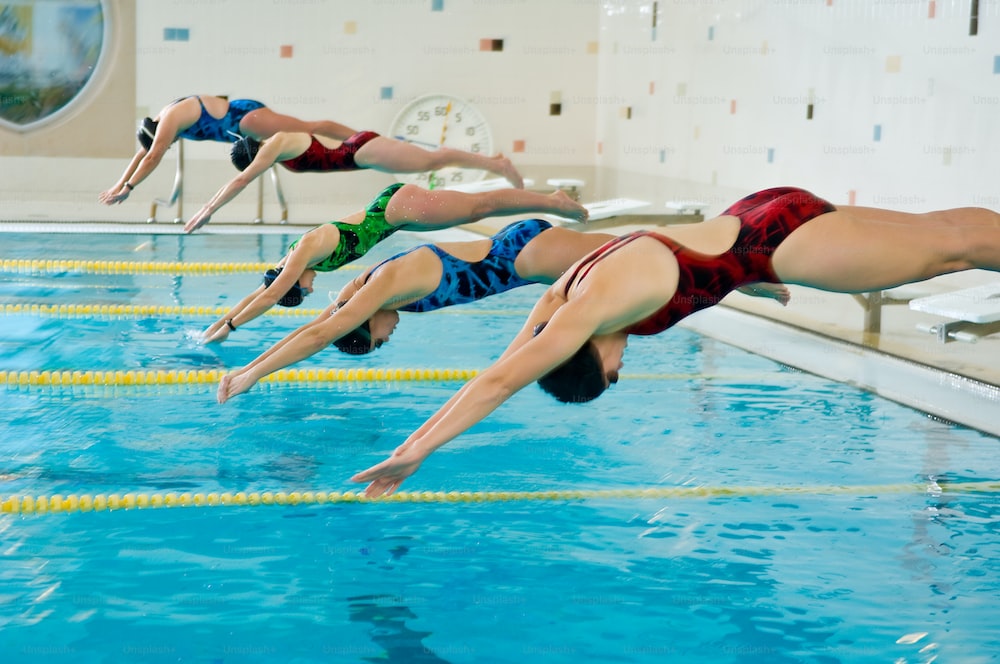Swimming is a fantastic, low-impact exercise that offers a multitude of benefits for the body and mind. However, like any physical activity, swimming can sometimes lead to discomfort or pain, particularly in the hips.
Understanding the causes of hip pain after swimming is crucial in order to effectively address and prevent this issue.
Common Causes of Hip Pain After Swimming
There are several common causes of hip pain after swimming. One of the primary reasons is overuse or repetitive strain on the hip joint. The repetitive kicking motion in swimming can put stress on the hip joint, leading to inflammation and pain.

Another common cause is poor technique, such as incorrect body alignment or kicking form. This can put unnecessary strain on the hips and result in discomfort.
Additionally, muscle imbalances or weakness in the hip area can contribute to hip pain after swimming. If certain muscles are not adequately conditioned or if there is an imbalance between the hip flexors and extensors, it can lead to increased stress on the hip joint.
Lastly, pre-existing conditions such as arthritis or bursitis can be aggravated by swimming and result in hip pain.
Signs and Symptoms of Hip Pain After Swimming
Hip pain after swimming can manifest in various ways. Some individuals may experience a dull ache or soreness in the hip joint, while others may feel sharp, shooting pain.
In some cases, the pain may radiate to the lower back or down the leg. It is also common to experience stiffness or limited range of motion in the hip joint.
It is important to pay attention to these signs and symptoms and seek appropriate treatment to prevent further complications.
Proper Swimming Techniques to Prevent Hip Pain
One of the most effective ways to prevent hip pain after swimming is to ensure proper swimming techniques.
Proper body alignment is crucial, as it helps maintain a neutral spine and reduces stress on the hips. Focus on engaging the core muscles and maintaining a streamlined position in the water.

Additionally, pay attention to your kicking technique. The flutter kick, with a slight bend at the knees, is the most efficient and least straining on the hips.
Avoid excessive frog kicks or scissor kicks, as they can put unnecessary strain on the hip joint.
READ ALSO: Do Swimmers Lift Weights?
Pre-Swimming Warm-Up Exercises for Preventing Hip Pain
Incorporating a proper warm-up routine before swimming can significantly help prevent hip pain. Below are pre-swimming warm-up exercises for preventing hip pain:
- Start with some light cardiovascular exercises, such as jogging or cycling, to increase blood flow to the muscles.
- Perform dynamic stretches that target the hip muscles. Examples of these stretches include leg swings, hip circles, and walking lunges. These exercises help warm up the hip muscles, increase flexibility, and prepare them for the demands of swimming.
-
After the dynamic stretches, it is important to perform specific hip-strengthening exercises. These exercises can help improve muscle imbalances and reduce the risk of hip pain.
Some effective hip-strengthening exercises include clamshells, hip bridges, and lateral leg raises. These exercises target the hip abductors, adductors, and gluteal muscles, which play a crucial role in hip stability during swimming.
Post-Swimming Cool-Down Exercises for Relieving Hip Pain
After swimming, it is essential to cool down and stretch the hip muscles to relieve any tension or tightness that may have developed during the workout.
Below are some post-swimming cool-down exercises for relieving hip pain:
- Begin with some gentle walking or low-intensity cycling to gradually decrease the heart rate.
-
Following the cardiovascular cool-down, static stretching is recommended to lengthen and relax the hip muscles.
Some effective hip stretches include the standing quad stretch, the standing hamstring stretch, and the seated butterfly stretch. Hold each stretch for at least 30 seconds and aim to feel a gentle pull in the targeted muscles. Remember to breathe deeply and relax into each stretch.
Incorporating these post-swimming cool-down exercises into your routine can help prevent hip pain and promote overall flexibility and mobility.
READ ALSO: The Ultimate Band Swimmers Workout Routine for Incredible Results
Rest and Recovery from Hip Pain After Swimming
If you are experiencing hip pain after swimming, it is important to allow your body sufficient time to rest and recover. Continuing to swim or engage in other strenuous activities may worsen the pain and delay the healing process.
Resting the hip joint can help reduce inflammation and give the tissues time to heal.

During the rest period, it may be beneficial to apply ice to the affected area for 10 to 15 minutes every few hours. Ice helps reduce inflammation and provides temporary pain relief.
Additionally, over-the-counter nonsteroidal anti-inflammatory drugs (NSAIDs) can help manage pain and reduce swelling. Be sure to follow the recommended dosage and consult with a healthcare professional if necessary.
Seeking Professional Help for Hip Pain
If the hip pain persists or worsens despite following the aforementioned strategies, it is advisable to seek professional help.
A healthcare provider, such as a physical therapist or orthopedic specialist, can evaluate your condition and provide appropriate treatment.
They may recommend specific exercises, manual therapy techniques, or assistive devices to address the underlying causes of hip pain and promote healing. It is essential to follow their guidance and adhere to any prescribed treatment plan for optimal recovery.
READ ALSO: Which Swimming Stroke Has a Wider Stroke than the Regular Style in the Swimming Sport?
Conclusion
In conclusion, hip pain after swimming can be a frustrating and debilitating issue, but with the right strategies, it can be effectively managed and prevented.
Understanding the causes of hip pain, practicing proper swimming techniques, and incorporating pre- and post-swimming exercises are key to preventing discomfort and injury.
Resting the hip joint when necessary and seeking professional help if needed are also crucial steps in the recovery process.
By taking these proactive measures, you can continue to enjoy the benefits of swimming while maintaining healthy hips.
Don’t miss out on our valuable tips and insights! Subscribe to our newsletter if you want to read more answers to difficult sports questions.
Subscribe to our newsletter!
Stay informed and take your athletic performance to the next level!
